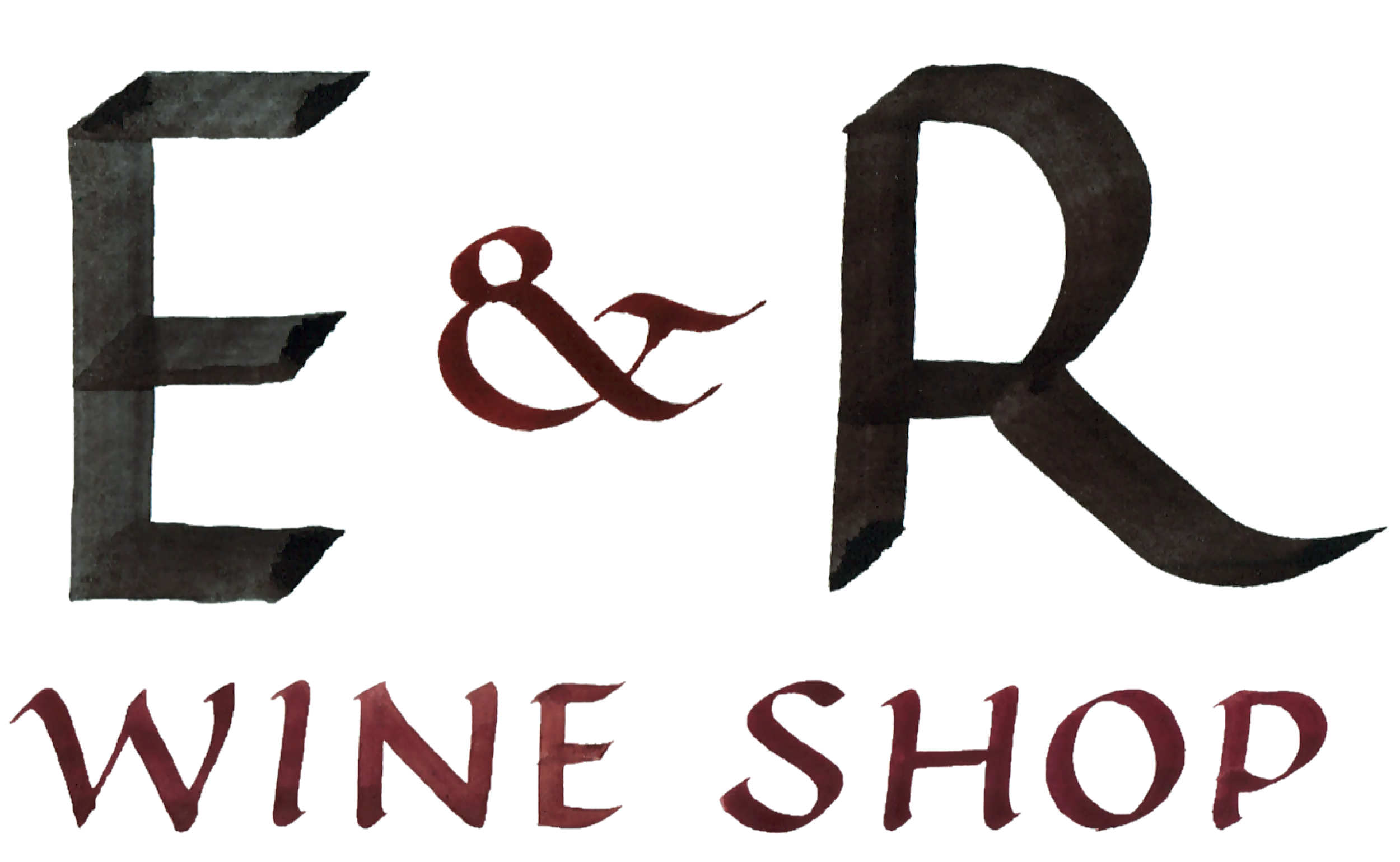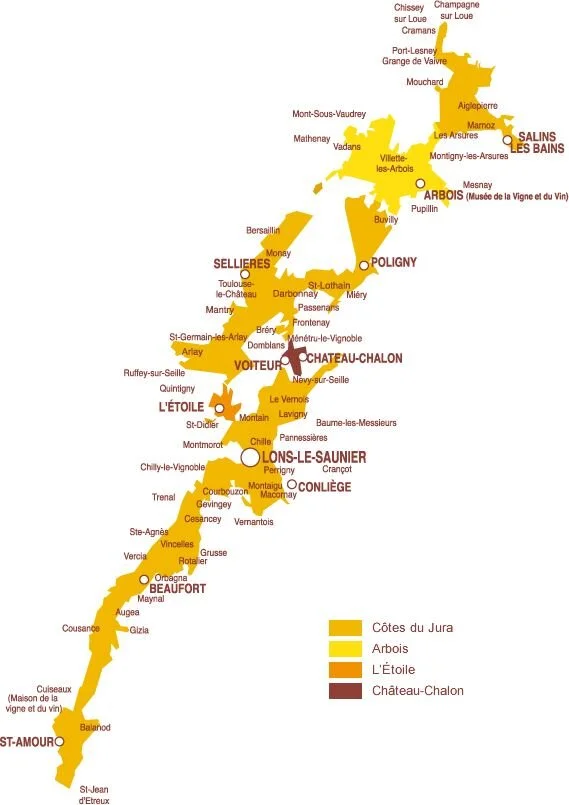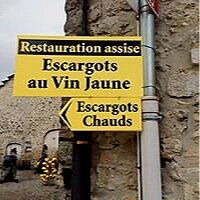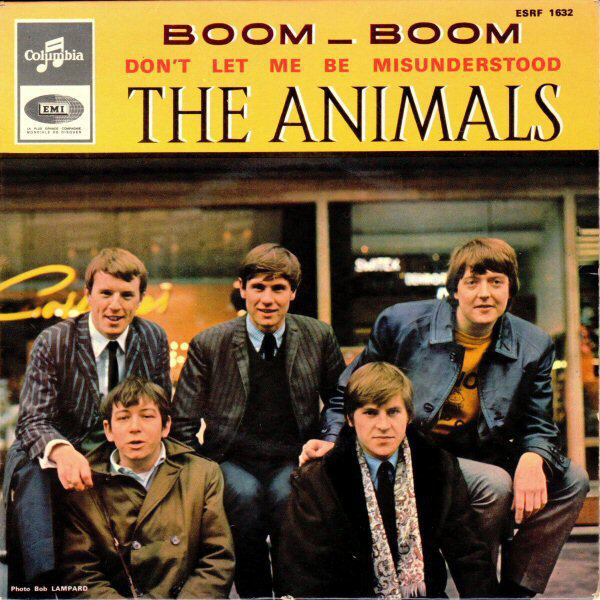Jura Notes and Our Selection
Just outside of Arbois.
JURA, NOT THE NEXT BIG THING
In fact, Jura is not only not the next big thing, it is a small thing: the smallest wine region in France. More or less no one goes there and hardly anyone is there. Few know these Jura wine places stretched out along a skinny lace of hills about 80 km (49miles); Poligny, L’Etoile, Beaufort, Sellieres, Arbois, and no one knows 60% of the five grapes allowed to be grown: Trousseau, Poulsard and Savagnin, though we all know the other 40%: Pinot noir and Chardonnay.
As part of the isolated Franche-Comté department between Burgundy and Switzerland, Jura and its wines have a prominence all their own only now beginning to be recognized in the USA. In spite of being like a complete unknown, all 4900 acres worth (size = seven Home Depots w/parking) are granted via the strict French regulations the designation of AOC. The first AOC in all of France was Jura’s “Arbois” (in 1936!) and Jura is home to five others: Château-Chalon, L’Étoile, Côtes du Jura, Mac- vin du Jura and Crémant du Jura.
THE GRAPES, THE AOC’S, AND THE WINES
The heartbeat of the Jura red grapes– their key note– is flavor woven with acidity. The black keys are the bold, pure, enjoyably delightful balanced flavors of cherry, blackfruit, stone, spice and currant, while the white keys are acidity: an harmonious acidity making reds that are not too fat and not too tart. This combination comes from the soil and the climate. The traditional regional hallmarks of the key red grapes of Pinot noir, Poulsard (called Ploussard in the zone of Pupillin) and Trousseau- with their lighter colors, purity and verve– result in wines harboring elegance over weight, finesse over alcohol, flavor over a big mouth feel and individuality over a senses-dulling familiarity catering to color, “bigness” and a “wow this is rich, but I have enough” sensibility. The wholly unique, indigenous Poulsard and Trousseau are Pinot noir-like, yet more airy, taut and ethereal. The wine world has few reds if any at all like these.
The two main whites, Chardonnay and Savagnin (as well as some Pinot gris for Crémant), produce enlightening wines to those new to the region and a few types of wines among the most unique and revelatory in France. It’s worthwhile recognizing that the Capitol on earth for both Pinot noir and Chardonnay, Burgundy, is only a short drive away. What Jura’s more northerly climate and cooler, shorter growing season removes in heft, it gives back in fine balance, great fruit purity and a savory guile.
Chateau Chalon Savagnin vineyard.
Jura’s ragged, loose strand of ground snakes across soils mostly composed of red, black and gray clay and limestone; vineyards in a hodge-podge across slopes, between farms and in twisted places where un-Handel-Messiah-like the rough places are not made plain... and nor are the wines. The largest of Jura’s AOC designations is the tiny “Arbois”, France’s very first AOC in 1936, yet its rich history of winemaking goes back at least to around the year 1400. Arbois (“ar” and “bois” translate to “fertile land”) produces about 70% of the region’s reds and 30% of the whites, and allows Poulsard, Trousseau, Pinot noir, Chardonnay and Savagnin. The Cotes du Jura AOC, from 1937, stretches from the northern tip to the southern border of the region and is the second largest of the six AOC’s. Like Arbois, it allows the same five grapes. The Crémant du Jura AOC produces the region’s heady sparkling white and red wines. AOC rules require at least 50% of the wine be made from Chardonnay, while the red/ pink Crémant rules say Poulsard and Pinot noir must account for at least 50% of the wine. The miniscule “L’Étoile” AOC uses Chardonnay and Savagnin and is so called because its unique border outline for the region is shaped roughly like a star (“étoile”).
The last two AOCs in Jura are singular to the region, France, and in some ways to the world. The “Macvin du Jura” AOC covers all of Jura, but makes up just 4% of its production. This unique wine is a “Vin de Liqueur” made by stopping the fermentation of grape must with the addition of local Marc (grape brandy) made exclusively from Jura grapes. In France, this broader AOC is called “Mistelles” and is from a tradition dating back to the 14th century. The Marc, which must be aged at least 18 months, is added to the fermenting grape juice, which itself must be aged in oak casks for at least a year. It is required to be at least 16% in alcohol and up to 22% for the AOC status.
The most famous AOC is “Chateau-Chalon” which is both a place and regional designation. It is home to production of the justly famed “Chateau-Chalon Vin Jaune”, or “golden” or “yellow wine”. This singular, sherry-like wine must be made using 100% Savagnin grapes that are aged a minimum of six years and three months (!) in partially filled oak casks. The “open space” in the cask allows a “viole”, or thin film of yeast to grow (like “flor” in sherry) causing the wine to darken over the years giving it a deep golden color and a unique expressive flavor. This style is sometimes associated with so-called oxidized wines, the process bringing to the wine its nutty flavor and vibrant, dry intensity. The taste and feel of the wine remains for a looooong time on the palate. From good vintages, “Vin Jaune” and “Chateau-Chalon” (similar process, but using grapes from different terroirs) can age beautifully for a century. This unique “yellow wine” (a classic match for poaching Bresse Chicken and mushrooms) is found & allowed only in Jura. When produced outside the tiny appellation of Chateau-Chalon it cannot be labeled the more spendy “Chateau-Chalon” but simply “Vin Jaune”! Both are expensive to produce, long-aging and small amounts go a long way. A great annual celebration in Jura’ La Percée du Vin Jaune features a few hundred different old bottles for tasting!
At Philippe Bornard’s winery.
Jura: Why We Went
We went for the same reason we are here: passion, curiosity, commitment and a wanting— a wanting to know the grapes, the ground, the wines and the people...
E&R’s first visit was about nearly two decades ago! Collectively, we pinned a big tack on the map: “we’re coming back here for certain”. Team E&R has gone back! This year we have been there twice... and we are learning. That first visit was both enchanting elixir and a voyage into the unknown. Over these last ten years, Jura’s gotten more notice, more acclaim, more visitors and has become more user-friendly for the uninitiated (that’s just about everyone), yet its wine- exploration magnetism pulls as powerfully as ever. The Jura is not a place for pilgrims, it is not on a major tourist route, it has no Chateau lore like the Loire, or cathedral like Chartres, or coast like Cassis, or historic towns as in other parts of France. It’s not close to Paris; in short, it is isolated. No one goes there and locals stay there.
Like Italy’s Valle D’Aosta, the Jurassien’s history and culture possess a remoteness and a kind of purity which have allowed it to remain nearly as ancient as its 600+ year winemaking history. Like Valle D’Aosta’s Petite Arvine, or Fumin or Mayolet grape— found nowhere else and totally original, unscathed by outside influence, trend and fashion—Jura has its Trousseau, Savagnin, Vin Jaune and Poulsard. This is a place of no conglomeration, no cosmopolitanism, no wine press scoring frenzy, no compulsion for new smoky vanilla taste and heavy, fat, gargantuan high-alcohol wines. It is an aria and a delight. It is the great little restaurant we all want no one to know about. It is the twinkle of the star, a place unto itself.
Côtes du Jura - Chardonnay from Jura.
CHARDONNAY FROM JURA
Because Chardonnay is ubiquitous and Jura isn’t, its Chardonnay may seem a new fangled grape planted by rich Parisians who moved to Jura to make wine as a hobby. Maybe so, but in Jura it goes back at least to the 10th century; it’s been called “Melon d’Arbois”, “Moular” and “Gamay Blanc” in the last 1000 years there. It is Jura’s most commonly planted varietal and accounts for 45% of the region’s vines, and takes up 66% of it’s acreage. While Chardonnay is made all over the world, the grape & limestone Jurrasien soil are like bread and butter!
The Clavelin 62cl bottle for Vin Jaune and Chateau Chalon wines.
THE HISTORIC CLAVELIN BOTTLE
The volume of this ancient bottle shape, called a “clavelin” is 62cl (from a measure of a liter), or according to legend, the amount of wine left from one liter after six plus years of aging. After this long time the wine takes on the famous color that is nick- named “the yellow wine” or Vin Jaune.
THE UNPARALLELED “MACVIN DU JURA AOC”
Macvin du Jura is another true specialty wine of the region with its known history beginning in documentation from the 14th century. Surprisingly, it only became an AOC in the region by a decree in November of 1991. The tiny Macvin AOC represents just 2% of Jura’s production and belongs to the super special group in France of the AOC Mistelles, or “liqueur” wines. All five Jura grapes, Savagnin, Chardonnay, Pinot noir, Trousseau and Poulsard are allowed, but not as wine, only through use the grape must (unfermented juice from the pressed grapes) to which a one third share of Marc (distilled brandy from grape pulp, skins and stems) is added. Macvin must come from using only Jura Marc and Jura grapes and needs to find an alcohol level between 16-22% to qualify.
OXIDATION: “OH LORD,
PLEASE DON’T LET ME BE MISUNDERSTOOD!”
Oxidative qualities in a wine can be intentional, as in Sherry or Vin Jaune, or unintentional, as in a flawed wine. It depends on degree, style, tradition, winemaking skill and/or the lack thereof. In the winemaking process, barrels are routinely “topped off” as the wine ages inside them. That is, the winemaker will add small amounts of wine to the barrel to replace wine that has evaporated. Keeping air in a barrel to a minimum keeps the wine fresh and this avoidance of air to the aging wine allows it to maintain fruit and freshness, and to avoid taking on a darker color and sometime overpowering nuttiness that can ecome off-putting. Think of how your half-filled bottle starts to taste after you left it open on the counter for three days!
In Jura, there is a long tradition of making wine in this style, oxidative with barrels not being topped off - intentionally so, and strictly controlled to allow the wine to develop with grace, power, complexity and a glorious nutty quality that, albeit, takes some getting used to. The line between fault and intention can seem obscured by the uninitiated, but is tastefully clear to the experienced drinker. The key actor is what Jurassiens call “Viole” and Jerez-ians refer to as “Flor” (in their Fino Sherry). With certain grapes and wines (Savagnin, Vin Jaune, Chateau-Chalon), by design, the winemaker does not top up the barrels and, in fact, does not completely fill them. In time, a thin film of yeast called “Viole” forms, closing off the juice and creating an oxygen barrier. The wine then ecomes partially oxidized and flavors resulting from the process, yeast, and grape culminate to reate a unique and exceptional wine: pungent and savory, redolent of walnuts, ginger, sea salt and dried fruits, with a rich yellow (jaune) hue and 100 mile finish. The best of these wines are artisanal, highly prized and are among the wine world’s greatest expressions. They can also outlive a few generations worth of humans.
Click on each wine for more detail.








